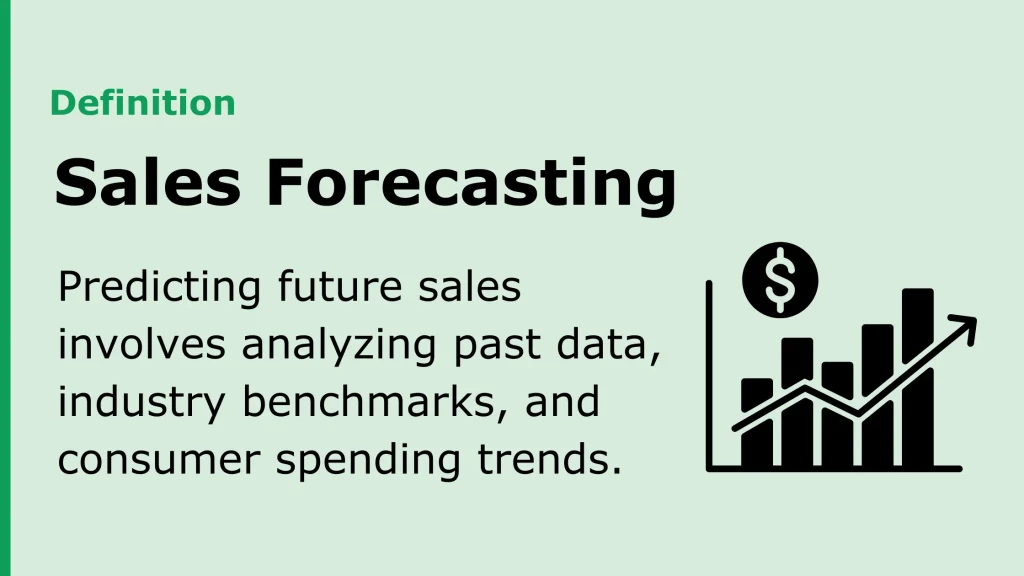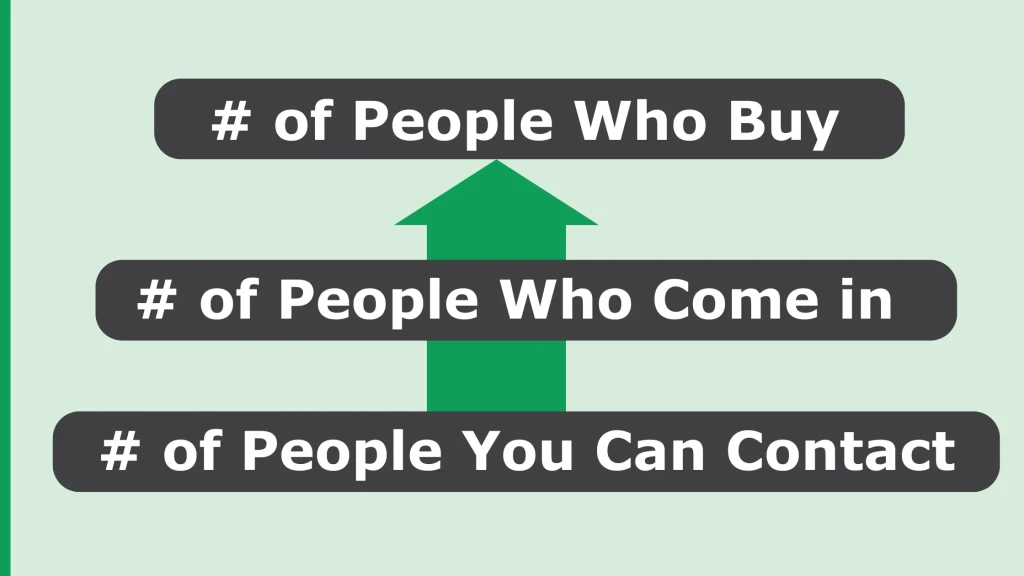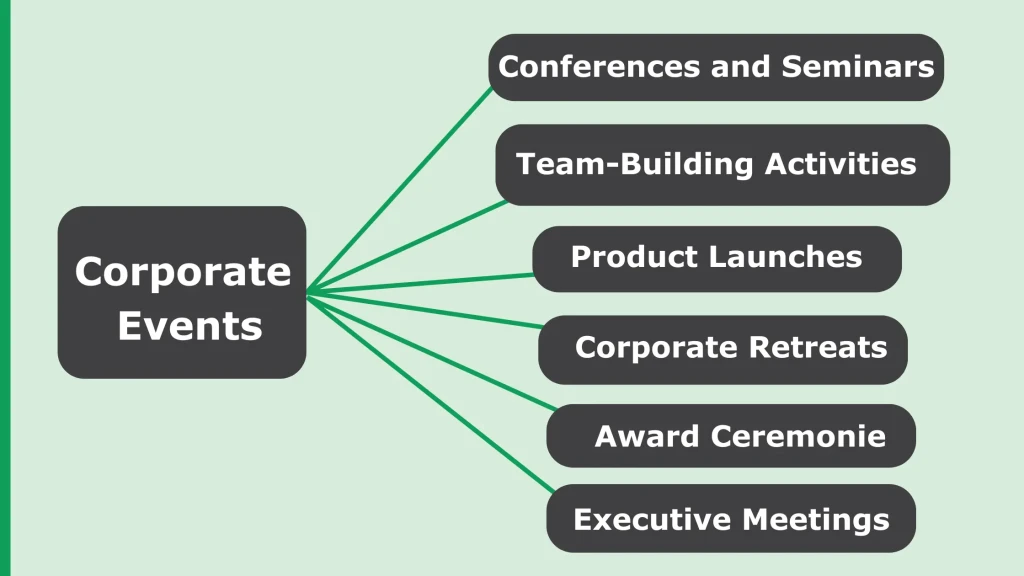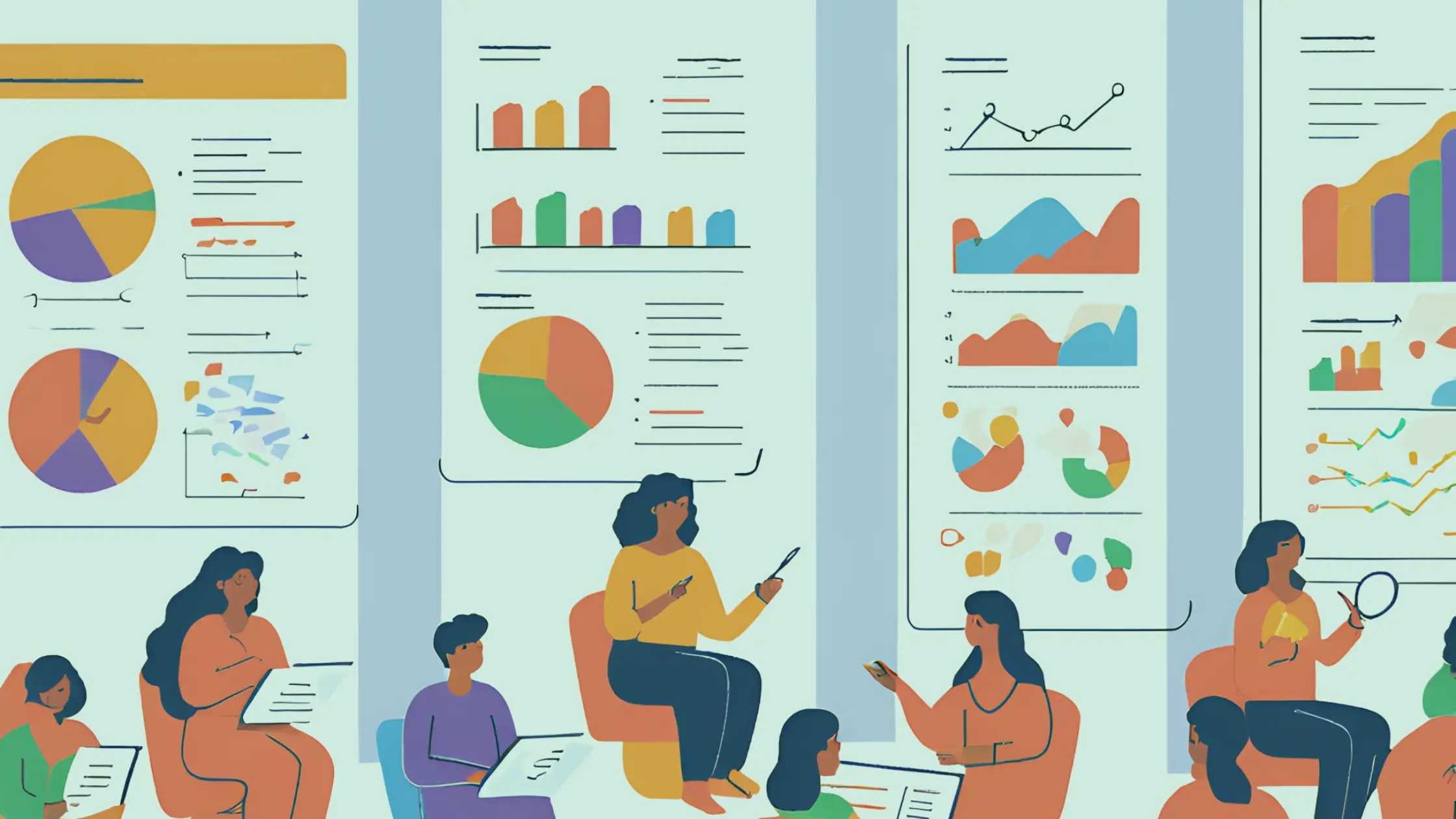Master Sales Forecasting: Create Accurate Sales Forecasts for Your Business.
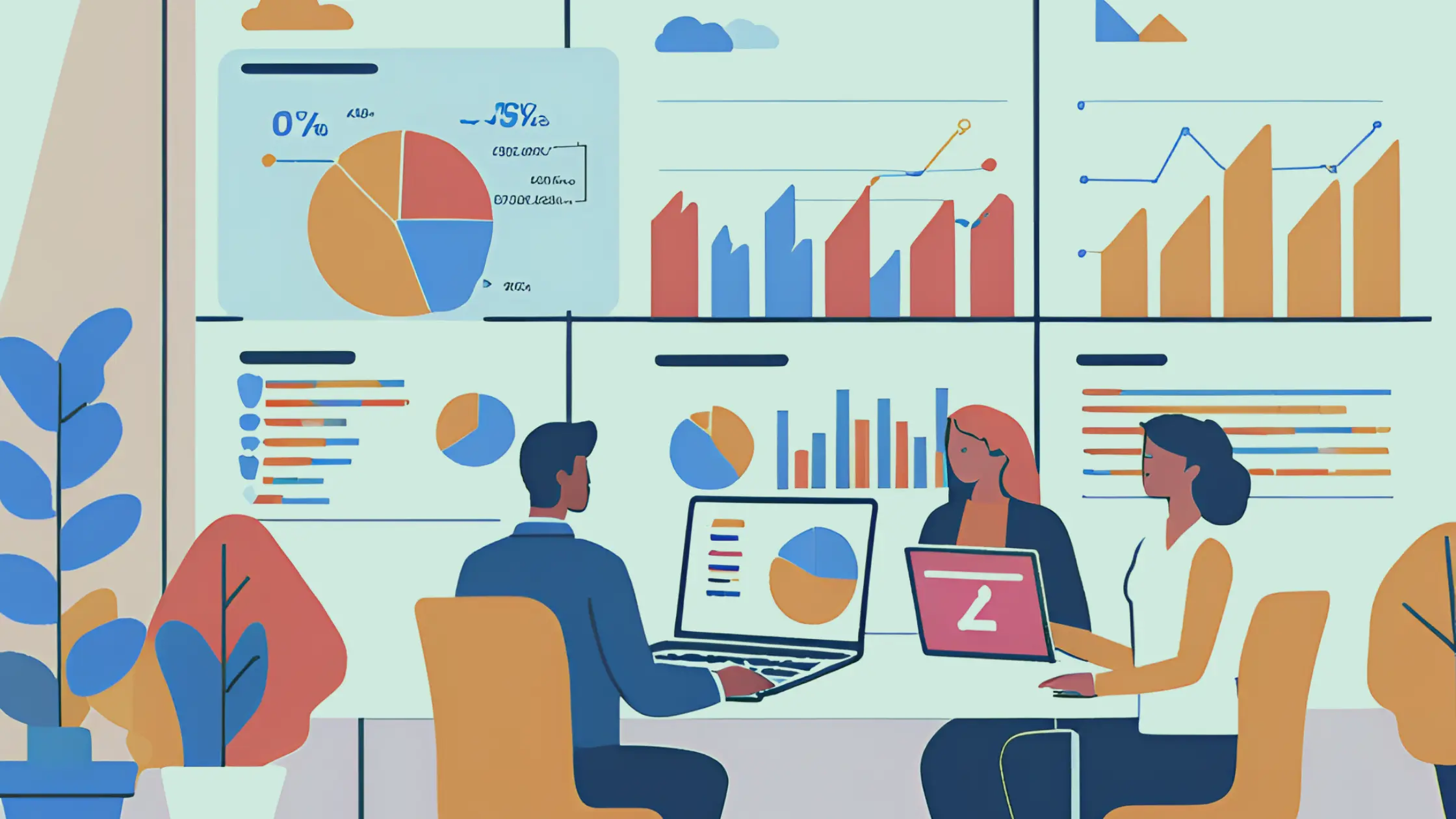
Entrepreneurs, whether new or experienced, often seek advice on one crucial topic: sales forecasting. While their optimism about the future fuels their ambition, many worry about setting unrealistic sales goals. They face challenges in crafting accurate sales projections and struggle to predict their actual revenue potential.
Forecasting can indeed seem daunting. After all, it’s not easy to predict the future. However, the good news is that you don’t need a crystal ball to succeed. Nobody understands your business better than you do, and that’s your greatest advantage.
If, by chance, you do possess the ability to foresee the future, you might as well skip the business hustle and dominate the stock market instead. But for the rest of us, crafting a solid sales forecast is well within reach.
The key is to remain calm and approach the process systematically. With the right guidance and tools, such as BznsBuilder’s financial forecasting features, you can create a credible and reasonably accurate forecast for your business.
What You’ll Learn in This Guide:
-
Why “bottom-up” forecasting is more effective than “top-down” approaches, and how to apply these methods.
-
The importance of focusing on key products or services rather than forecasting everything you offer.
-
How to validate your assumptions to enhance the accuracy of your sales forecasts.
With these insights, you’ll be equipped to set realistic goals and drive your business forward with confidence. Let’s dive in!
What Is Sales Forecasting?
Sales forecasting is the process of estimating future sales to help you make informed and strategic business decisions. A sales forecast typically relies on a combination of:
-
Historical sales data
-
Industry benchmarks
-
Economic trends
This method enables you to better manage resources like workforce, cash flow, spending, and other factors influencing your revenue and sales.
For established businesses, leveraging previous sales data often makes it easier to create accurate sales forecasts. However, newer businesses must rely on market research, competitive benchmarks, and other indicators to set a baseline for sales projections.
To explore this topic further, check out our guide on creating a financial forecast without historical data.
Why Is Sales Forecasting Important?
1. Sets the Stage for Your Financial Plan
Your sales forecast is the cornerstone of the financial story you’re creating for your business. With a well-constructed forecast, you can easily develop key financial documents such as:
-
Profit and loss statement
-
Cash flow statement
-
Balance sheet
2. Informs Business Goals
Sales forecasting helps you set realistic and achievable goals by estimating future sales. This process answers critical questions like:
-
What milestones do you want to achieve in the next month, year, or five years?
-
How many customers do you expect to acquire?
-
What is the average amount each customer will spend?
3. Answers Investor Questions
A detailed sales forecast provides clarity to potential investors. It demonstrates that you have clear goals and a strategic plan for growth. By presenting an up-to-date and organized forecast, you’ll be better equipped to pitch your business to stakeholders, investors, and employees.
4. Helps Manage Expenses
Sales forecasting guides budgeting by helping you determine the minimum sales needed to cover expenses. It ensures you allocate resources effectively to areas like:
-
Marketing to attract new customers
-
Operations and administrative tasks
-
Production costs
-
Personnel and hiring
5. Minimizes Risks During Growth
When pursuing aggressive growth strategies, sales forecasting helps balance optimism with reality. It ensures you consider:
-
How much more you want to sell
-
Additional spending required
-
Cash reserves needed to sustain growth
Without a sales forecast, businesses risk overspending and missing targets, potentially leading to cash flow challenges. A solid sales forecast provides a roadmap for sustainable growth and helps mitigate risks during uncertain times.
Which Sales Forecasting Model Is Best?
Many startups make a critical mistake when it comes to sales forecasting—they forecast “from the top down.”
What Is Top-Down Forecasting?
Top-down forecasting involves estimating the total size of the market (TAM, or total addressable market) and then predicting a small percentage of that market as your target. For example, with over 1.14 billion smartphones sold worldwide in 2023, a startup might assume capturing 1% of that market is achievable.
While this approach seems reasonable, it’s not grounded in reality. It fails to consider:
-
What drives those sales?
-
How customers will discover your product or service?
-
How many of those who discover your business will actually make a purchase?
Why Bottom-Up Forecasting Is Better
Instead of starting with broad market assumptions, a bottom-up forecast builds projections based on achievable, realistic inputs. Here’s how to create one:
- Identify Your Share of the Market (SOM): Start with the number of potential customers you can realistically reach through advertising, sales calls, or other marketing methods.
- Estimate Engagement: Of the people you reach, determine how many will engage with your business—whether by visiting your website, calling, or walking into your store.
- Project Conversions: Finally, calculate how many of those engaged customers will make a purchase.
This approach ensures your sales forecast is grounded in actionable data, giving you a more reliable foundation for decision-making and planning.
An Example of Bottom-Up Forecasting
Let’s use an example to illustrate this approach:
-
8,000 people see your social media campaign promoting your product.
-
1,200 people click through to your website to learn more.
-
150 people proceed to make a purchase.
These numbers provide a realistic progression from outreach to sales and demonstrate the value of starting with achievable assumptions.
The next step is to determine the average amount those 150 customers will spend. Do they typically spend $30? $75? While it’s okay to make an educated guess here, refining your projections through customer interviews can significantly improve accuracy. Simply talking to potential customers about their spending habits can provide surprising insights to enhance your forecast.
How to Create a Sales Forecast
Your sales projections estimate how many goods and services you believe you can sell over a specific period. This also includes the cost of producing and selling those goods and services (COGS) and the estimated profit you’ll retain.
Steps to Build Your Sales Forecast
- List Out Goods and Services: Start by listing all the products or services you plan to sell.
- Estimate Sales Volume: Predict the number of each product or service you expect to sell.
- Define Unit Prices: Set the price or dollar value for each item.
- Calculate Revenue: Multiply the sales volume by the unit price to estimate total revenue.
- Determine Production Costs: Identify the cost to produce and sell each product or service.
- Calculate Total Costs: Multiply the production cost by the estimated sales volume.
- Estimate Profit: Subtract the total cost from the total sales to determine profit.
This basic framework gives you a clear picture of what to expect from your sales forecast. However, remember to handle each sales category separately. Repeating these steps for each product or service ensures accuracy and avoids overgeneralizations.
Next, we’ll delve into specific methods, assumptions, and critical questions you’ll need to address to build a more robust and actionable sales forecast.
How Detailed Should Your Forecast Be?
When creating your sales forecast, the first step is identifying the revenue streams—products or services—you’ll create projections for.
Avoid Being Too Generic or Too Detailed
-
Don’t lump everything into one category and forecast sales for your entire business.
-
Avoid breaking down every individual product or service you offer into its own forecast.
Use Broader Categories
For example, if you’re running an event planning business, avoid forecasting sales for each specific type of event. Instead, group them into broader categories such as:
-
Corporate events
-
Social gatherings
-
Weddings
Aim for 3–10 Categories
Having between 3 and 10 forecast categories strikes the right balance. Here’s why:
- Fewer than 3 categories likely means you haven’t divided your products or services enough.
- More than 10 categories can make the forecasting process overly complex and time-consuming.
Flexibility Is Key
Remember, this isn’t set in stone. If your initial categories don’t work as expected, you can adjust them later. Start with a few logical categories, and refine as needed. The important part is to begin and iterate as you go.
Should You Forecast in Units or Dollars?
When creating a sales forecast, a common question arises: should you forecast in units or dollars? Let’s start by understanding what “unit” sales mean.
What Is a Unit?
A “unit” is a stand-in for whatever you are selling. For example:
-
A single meal at a restaurant would count as one unit.
-
An hour of consulting work is also a unit.
With this understanding, let’s explore why forecasting sales by units can be more beneficial than focusing solely on dollar amounts.
Why Forecast Sales by Units?
Flexibility with Variables
When forecasting by units, you gain flexibility with two key variables:
- Number of Units Sold
- Price per Unit
In contrast, a dollar-based forecast only considers the total revenue, skipping important details about the quantity sold and average price.
Easier to Conceptualize
Units allow you to focus on tangible numbers, such as the number of products, hours, or meals sold. It’s often easier to think about sales in these terms rather than abstract revenue figures.
Greater Detail in Performance Analysis
At the end of the month, a unit-based forecast provides a clearer picture of your performance:
-
Did you meet your sales goals by selling more units than expected?
-
Or did you exceed expectations by charging a higher price per unit?
This level of detail makes it easier to identify what’s working and where improvements are needed.
How to Forecast Sales by Units
- Predict Monthly Unit Sales
-
Use the bottom-up forecasting method to estimate how many units you’ll sell.
-
- Estimate Average Price per Unit
-
Determine the average price point for each unit.
-
- Calculate Total Sales
-
Multiply the number of units sold by the average price to get your total sales forecast.
-
Example
Let’s say you plan to sell 1,000 units at $20 each:
- Units Sold: 1,000
- Price per Unit: $20
- Total Sales: 1,000 × $20 = $20,000
This approach helps you build a more detailed and actionable sales forecast, ensuring you stay on top of both volume and pricing dynamics.

What Are Your Sales Forecast Assumptions?
No matter how sophisticated your forecasting methods are—whether based on historical data, market research, or advanced modeling—your projections are built on assumptions. A good sales forecast doesn’t predict the future; instead, it aggregates information and makes educated guesses to shape your outlook. Here are the key assumptions to consider:
Market Conditions
Understanding the broader market landscape is essential to predicting overall growth or challenges.
-
Is the economy expanding or contracting?
-
Are there new competitors entering your industry?
-
Are labor or material shortages affecting your business?
-
Are there new customer segments you can tap into?
A growing market provides more opportunities, while a shrinking one sets limitations. Knowing how your business might react to market changes helps refine your forecast.
Products and Services
Your offerings are constantly evolving, and these changes directly impact your sales assumptions.
-
Are you introducing a new product or service?
-
Are you adjusting pricing or changing sales channels?
-
Are production costs increasing or decreasing?
Each of these factors influences your forecast. For example, a new product launch might initially disrupt your sales before creating additional revenue streams.
Seasonality
Many businesses experience predictable fluctuations in sales throughout the year due to holidays, weather, or other factors.
-
Do you see sales spikes during certain seasons?
-
Are there historical trends you can rely on?
-
For new businesses, can you analyze competitors to understand seasonal patterns?
Identifying and planning for these peaks and troughs ensures your forecast reflects reality.
Marketing Efforts
Your marketing strategy can significantly influence your sales performance.
-
Are you launching a new campaign?
-
Is your ad spend increasing or decreasing?
-
Are you exploring new marketing channels or refining existing ones?
Track how these efforts connect to sales performance and adjust your forecast accordingly.
Regulatory Changes
Industry regulations can impact your sales positively or negatively.
-
Are there upcoming laws that might influence your operations?
-
Are you prepared to adapt to new compliance requirements?
Keeping an eye on regulatory developments ensures your forecast isn’t blindsided by sudden changes.
Experience and Expectations
Your past experiences and industry knowledge provide valuable insights—but they can also skew your assumptions.
-
Are your projections overly optimistic or pessimistic based on past success or challenges?
-
Have you considered both historical data and current trends to balance your forecast?
If your business has been operational for some time, use historical data as a baseline but adjust for external factors and new information.
How Far Forward Should You Forecast?
For most businesses, a monthly sales forecast for the next 12 months is ideal. Beyond that, an annual sales forecast for the following three to five years can help guide long-term strategy.
Why 12 Months?
A 12-month horizon provides a good balance of predictability and practicality. It allows you to:
-
Make educated guesses about upcoming trends.
-
Update your forecast regularly with actual performance data.
-
Adjust to changes in the market, customer behavior, or your business operations.
The Challenges of Long-Term Forecasting
The further you project into the future, the less accurate your forecast will be. Changes in the market, economy, and your own business can make long-term predictions unreliable.
-
The business environment is dynamic and constantly evolving.
-
Your own offerings and strategies may shift dramatically over time.
Embrace Flexibility
Remember, all forecasts are inherently inaccurate—and that’s okay. The goal is not perfection but informed decision-making. As you gather more data about your business and customers, adjust your forecasts to reflect new realities. Think of your forecast as a living document that evolves with your business.
Why Using Visuals Will Make Forecasting Easier
Visualizing your sales forecast with charts or graphs can make it easier to understand and analyze your projections.
- Identify Trends: Visualizations help you quickly spot dips during slow periods or peaks during busy seasons.
- Highlight Unreasonable Assumptions: If you see a sudden jump in sales from one month to the next, visuals can prompt you to question and validate the assumptions behind this growth.
Why Using Visuals Will Make Forecasting Easier
Visualizing your sales forecast with charts or graphs can make it easier to understand and analyze your projections.
- Identify Trends: Visualizations help you quickly spot dips during slow periods or peaks during busy seasons.
- Highlight Unreasonable Assumptions: If you see a sudden jump in sales from one month to the next, visuals can prompt you to question and validate the assumptions behind this growth.
Example:
A line chart showing monthly sales projections might reveal that your forecasted growth for March is unusually high. This should prompt you to ask:
-
What strategy supports this anticipated growth?
-
Do you have a campaign, product launch, or seasonal event driving this increase?
Using visuals ensures that your forecast is not only data-driven but also easily interpretable for decision-making and adjustments.
Adjust Your Forecasts Based on Actual Results
Smart businesses use their sales forecasts to measure progress and stay on track. By turning your forecast into a live management tool, you can run your business more effectively.
Conduct Regular Financial Reviews
Hold monthly financial review meetings to evaluate your business’s performance. Compare the actual numbers from your accounting software to your forecast:
-
Are you exceeding your goals?
-
Are you falling short?
Use Performance Data to Inform Strategy
Whether you’re surpassing or missing your targets, understanding why helps guide your next steps. If you’re underperforming, adjust your strategy to address gaps. If you’re outperforming, capitalize on what’s working.
This approach ensures your business numbers drive your strategy, keeping you agile and aligned with your goals.
Sales Forecasting Isn’t as Difficult as You Think
Remember, sales forecasting doesn’t have to be complicated. As an entrepreneur, you are uniquely qualified to create a forecast for your business. You know your customers, market, and goals better than anyone else.
Ready to Create Your Own Sales Forecast?
To make the process even easier, download our free sales forecast template. It includes:
-
Pre-built formulas
-
Formatting for product and subscription businesses
For more advanced features, consider using sales forecasting software like BznsBuilder. With LivePlan, you can:
-
Automatically turn accounting data into forecast categories
-
Generate revenue suggestions and instantly add them to your forecast
-
Compare your forecast to actual data with the intelligent insights dashboard
-
Maintain an accurate view of your cash position with BznsBuilder’s Real-Time Forecasting
-
Receive AI-powered monthly performance analysis
These tools free up your time to focus on analyzing performance and making strategic decisions, rather than manually updating your forecasts.
FAQ
How Do You Calculate Your Sales Forecast?
Calculating your sales forecast for an individual product or service is straightforward. Set a number for how many sales you expect to make and multiply it by how much you will sell it for.
What Data Is Needed for a Sales Forecast?
The data needed for a sales forecast depends on your business stage:
- For new businesses: Start with a list of your revenue streams. Use industry data and market reports to guide your projections.
- For established businesses: Use historical data as a baseline and adjust for current market conditions and trends.
What Is the Best Method to Forecast Sales?
The best method to forecast sales is bottom-up forecasting. This approach forces you to estimate how many people you’ll realistically reach and convert, rather than starting with the overall market size.



